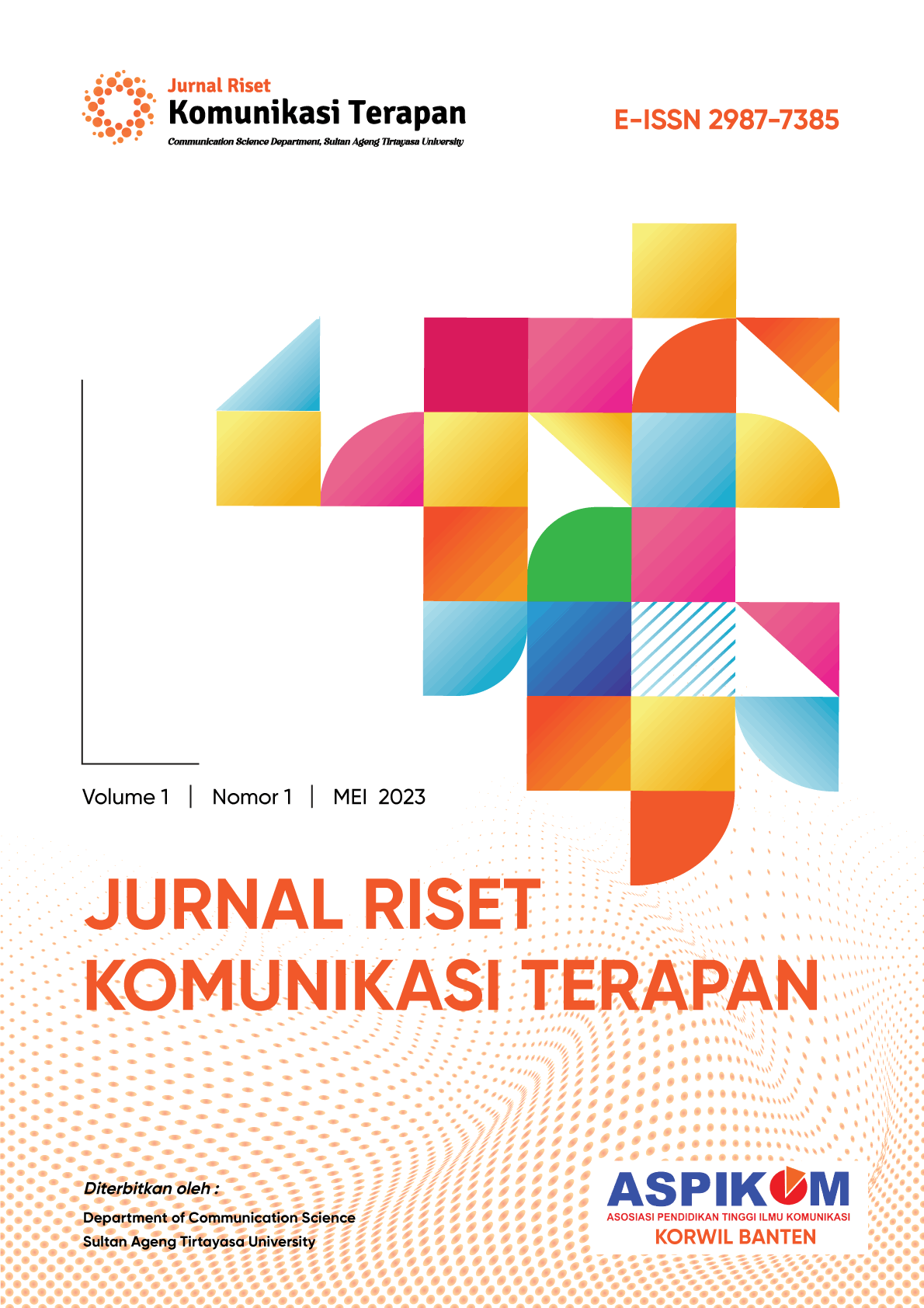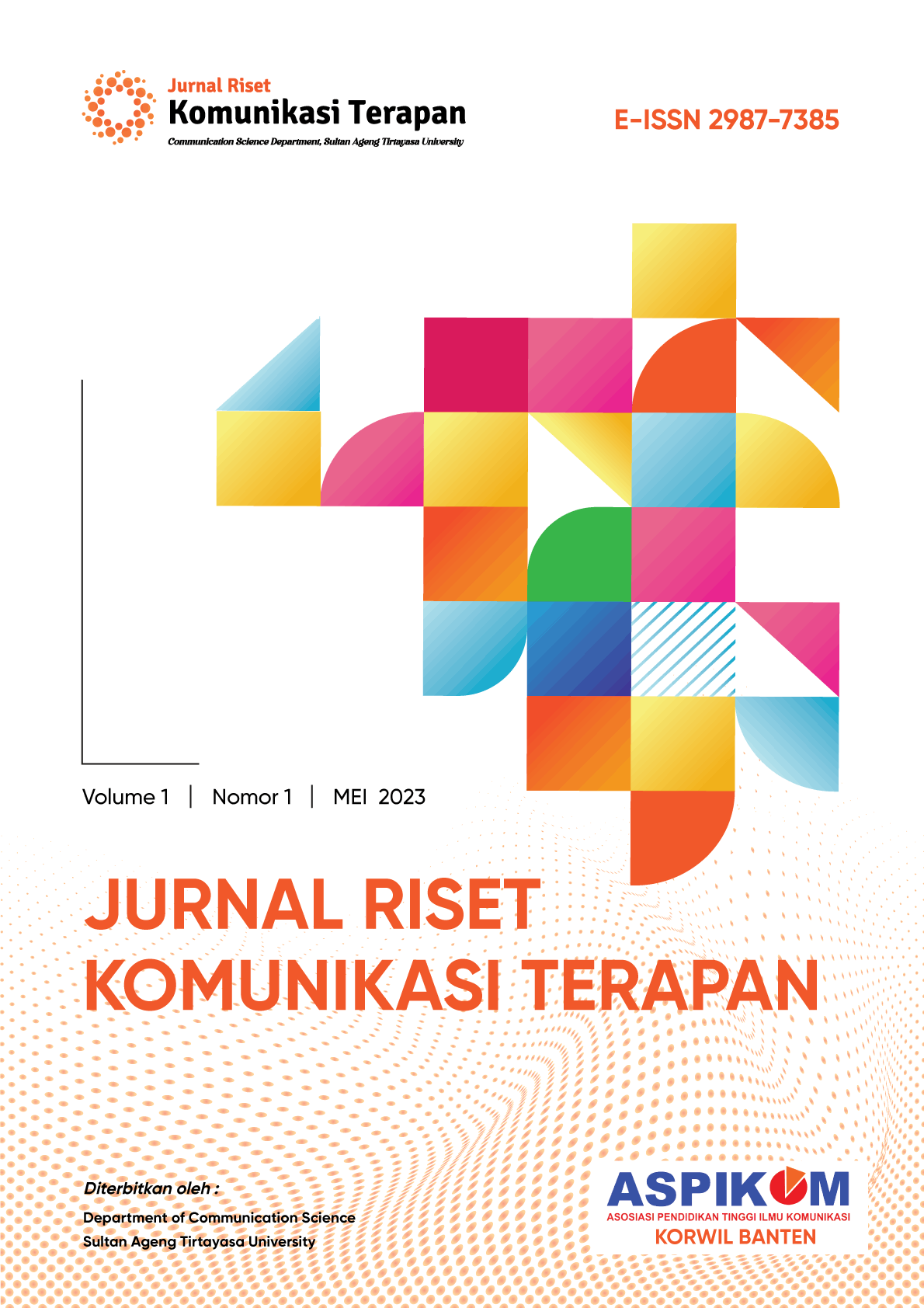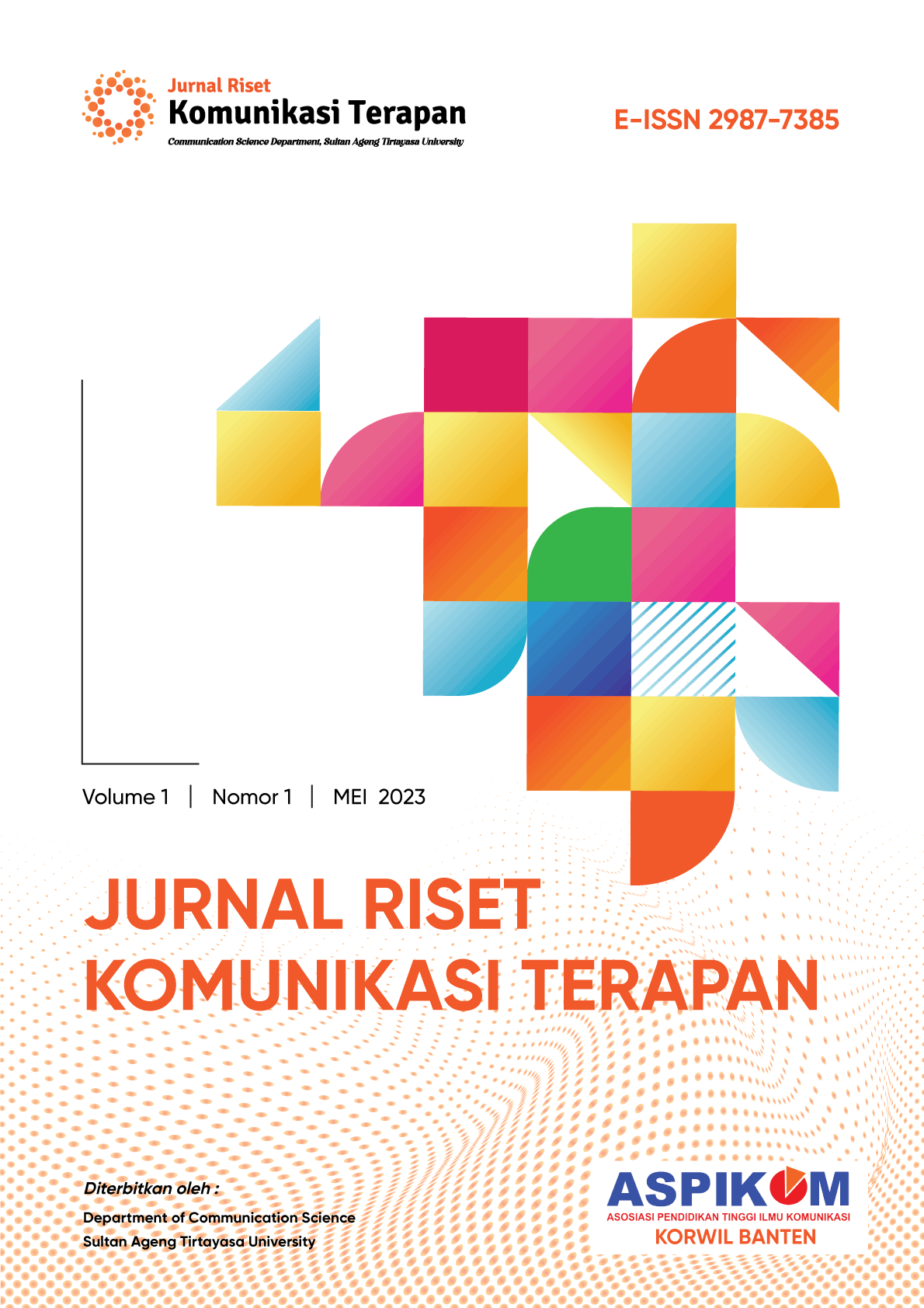KAFE SEBAGAI SENTRA DISKUSI PUBLIK ANAK MUDA KOTA SERANG (Studi Kasus Kafe Umakite dan Kafe Mang Jaseng)
Abstract
In Serang City, Cafe Umakite and Mang Jaseng became pioneers in forming a friendly cafe for discussion for everyone, especially youth. Seeing this unique phenomenon, the researchers tried to explore the role and how the public opinion formed in the two cafes. This study uses a descriptive qualitative approach. The method used is a case study, at Kafe Umakite and Kafe Mang Jaseng, with a constructivism research paradigm. Data collection techniques used are observation, in-depth interviews, library research, and documentation, with triangulation as a test of the validity of the data. The results show that Umakite and Mang Jaseng cafes are proof that a cafe can be more than just a place to hang out and drink coffee. Their role as facilitators or even initiators of discussions can provide a platform for community aspirations. The topics discussed in this research at Cafe Umakite are: 1) Creative economy, 2) Multimedia, 3) Social issues, 4) Politics, 5) Public policy, 6) Social Media, 7) Technology. While the topics discussed at the Mang Jaseng Cafe were: 1) Employment, 2) Organizational activities, 3) Daily problems, 4) Issues in social media, 5) Economic issues, 6) Technology, 7) Public policy . The formation of opinions in these cafes comes from open discussions about public issues that exist in society. However, this does not mean that the discussion can necessarily be said to have an effect on government policy. However, the thing that needs to be underlined is that the topics are real and felt by society, therefore shaped the public opinion.
Keywords: Cafe, public discussion, public sphere, public space.
Full Text:
PDFReferences
Ahmad, H. (2021). Tempat Ngopi yang Banten Banget Nih, Umakite Namanya. Bisnisbanten.Com.
Asri, R. (2021). Ekspresi Kebebasan Berpendapat Di Media Sosial: Telaah Kritis Ruang Publik Habermas.
Danang Sugianto. (2019). Hasil Riset: Kedai Kopi di RI Bertambah 2.000 Dalam 3 Tahun. DetikFinance.
Effendy, O. U. (2017). Ilmu Komunikasi, Teori dan Praktek. In Komunikasi dalam sebuah organisasi.
FARIDA ANI. (2014). Penerapan Konsep Child Friendly Space Pada Ruang Publik Kampung Badran Yogyakarta.
Hantono, D., & Ariantantrie, N. (2018). Kajian Ruang Publik Dan Isu Yang Berkembang Di Dalamnya. Vitruvian, 8(1), 43. https://doi.org/10.22441/vitruvian.2018.v8i1.005
Hasrullah. (2012). Eksistensi Usaha Kafe Di Kota Makassar (Suatu Tinjauan Antropologis). Universitas Hasanuddin Makassar.
kbbi. (n.d.). Arti Kata Kafe Menurut KBBI.
Lestari, M. T. (2021). Public Relations Event Membangun Image, Reputasi dan Mutual Understanding. In Prenada Media.
Littlejohn, S. W., & Foss, K. A. (2011). Theories of human communication. Waveland Press.
Malik, A. (2018). Ruang Public Sebagai Representasi Kebijakan Dan Medium Komunikasi Public (Studi Komunikasi Kebijakan Ruang Public Kota Serang). Sawala, 6(2), 82–88.
Mardhiyah, H. (n.d.). Penerapan Konsep Child Friendly Space Pada Ruang Publik Kampung Badran Yogyakarta.
Prasetyo, A. G. (2012). Menuju Demokrasi Rasional: Melacak Pemikiran Jürgen Habermas tentang Ruang Publik.
Rianto, P. (2010). Opini Publik, Agenda Setting,dan Kebijakan Publik. Jurnal Komunikasi, 5(1), 31–40.
Ruslan, Rosady. (2016). Manajemen Public Relations dan Media Komunikasi : Konsep dan Aplikasi. Acta Diurna.
SAWIR, M. (2020). Birokrasi Pelayanan Publik.
Sugiyono. (2017). Metode Penelitian Kuantitatif, Kualitatif Dan R&D.
Suwatno. (2018). Pengantar Public Relations Kontemporer. Remaja Rosda Karya.
Usman, M. U. (2001). Menjadi guru profesional Cet. In XIII. Bandung: Remaja Rosdakarya.
Warna, R. (2021). Mantan General Manager Jawa Pos Group Buka Kafe di Kota Serang, Tempatnya Asyik Untuk Kongkow. Ekbisbanten.Com.
Refbacks
- There are currently no refbacks.

 ONLINE SUBMISSION
ONLINE SUBMISSION FOCUS AND SCOPE
FOCUS AND SCOPE AUTHOR GUIDELINES
AUTHOR GUIDELINES PEER REVIEW PROCESS
PEER REVIEW PROCESS DOWNLOAD TEMPLATE
DOWNLOAD TEMPLATE OPEN ACCESS POLICY
OPEN ACCESS POLICY PUBLICATION ETHIC
PUBLICATION ETHIC COPYRIGHT NOTICE
COPYRIGHT NOTICE PUBLICATION FEE
PUBLICATION FEE JOURNAL CONTACT
JOURNAL CONTACT JOURNAL HISTORY
JOURNAL HISTORY








